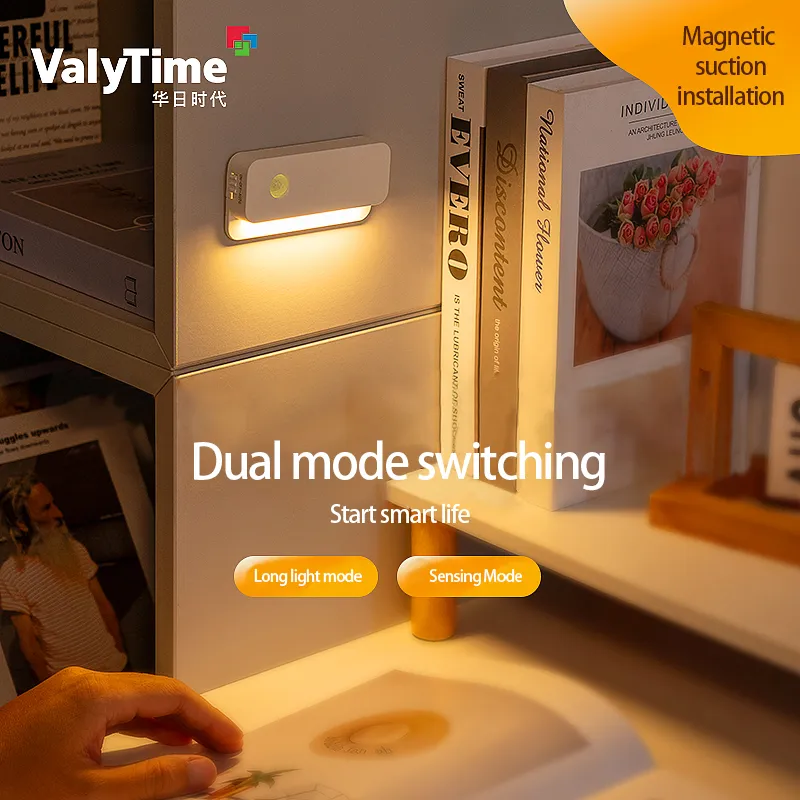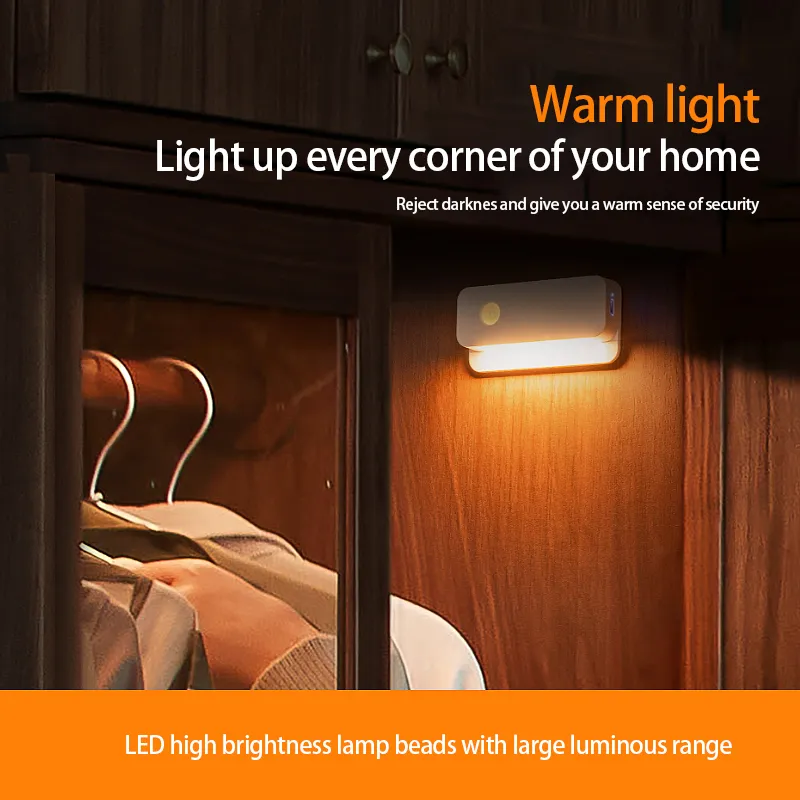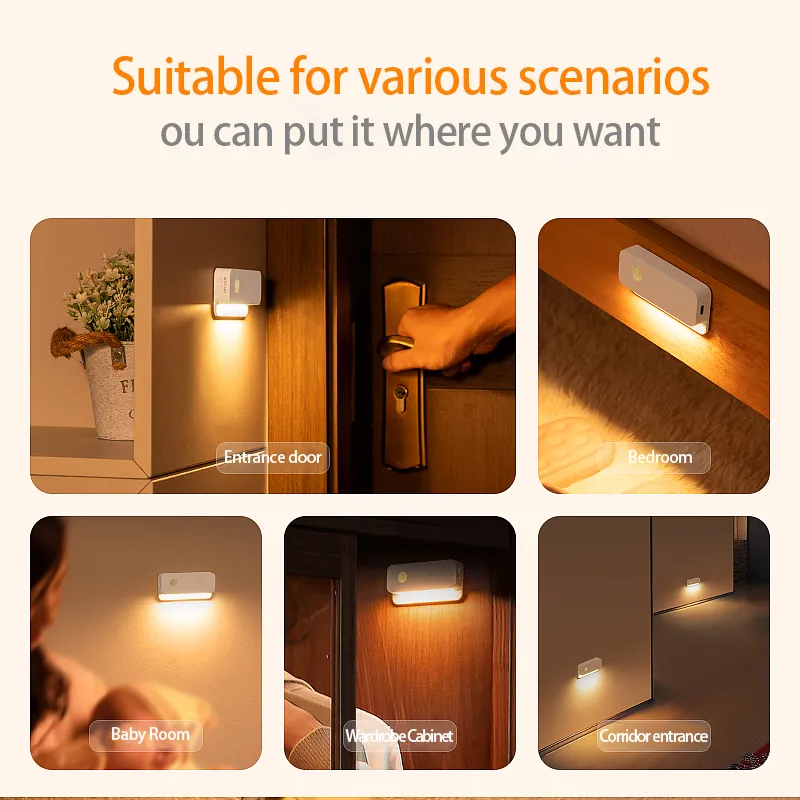How to use LED motion sensor night light?
LED motion sensor night light is a high-efficiency lighting device that combines LED lighting technology and intelligent motion sensor functions. This type of night light can sense human motion in the surrounding environment and automatically turn on or off, greatly improving the convenience and safety of home lighting. It is especially suitable for use at night or in low-light environments to ensure that family members get enough lighting when they are active at night.
However, although LED motion sensor night light has brought many conveniences to our daily lives, due to its technical characteristics and the diversity of usage scenarios, many users may have questions about how to use this type of device correctly. How to maximize the advantages of LED motion sensor night light and ensure its effective application in different areas of the home has become a topic worth discussing.
This article will discuss in detail the working principle, installation location, usage method, common troubleshooting and maintenance of motion sensor night light to help users fully understand and correctly use this smart night light.

What is the principle of LED motion sensor night light?
Before discussing in depth how to use LED motion sensor night light, it is very necessary to understand its working principle. LED motion sensor night light is mainly composed of LED bulbs, motion sensors, photosensitive sensors and corresponding batteries or power supplies. Its working process is as follows:
● Motion sensor: This is one of the core components of LED motion sensor night light. Usually, night lights are equipped with infrared or microwave sensors. Infrared sensors determine whether there is movement by detecting the heat emitted by the human body, while microwave sensors detect movement by emitting microwave signals and receiving reflected signals. The sensor can determine whether the light needs to be turned on or off according to changes in the environment.
● Photosensitive sensor: In order to save energy, LED motion sensor night lights are mostly equipped with photosensitive sensors. The photosensitive sensor can determine the brightness of the environment. When the surrounding light is strong, the sensor will automatically turn off the night light; when the light is weak or completely dark, the night light will automatically light up.
● LED bulb: As the light source, LED bulbs have the characteristics of high efficiency, energy saving, and long life. Its light is relatively soft, which is very suitable as a lighting device for night use. It can provide sufficient brightness without causing eye discomfort.
● Battery or power supply: Most LED motion sensor night lights are battery-powered, especially wireless designs, which are convenient for users to place in different locations; while some higher-power night lights need to be powered by sockets. Battery-powered night lights are easy to install, but the batteries need to be replaced regularly.

How to choose a suitable LED motion sensor night light?
1. Consider the place of use
The selection of LED motion sensor night light should take into account the characteristics of the installation location. Different installation locations may require night lights with different functions. For example:
● Bedroom: The LED motion sensor night light in the bedroom should have a soft light source to avoid disturbing sleep. At this time, it is ideal to choose a night light with a strong dimming function or light sensing function.
● Corridor or stairs: These places may require stronger lighting at night to avoid accidental falls due to insufficient light. The motion sensor night light selected in such areas should have a longer sensing distance and stronger brightness.
Kitchen or bathroom: The night lights in these areas need to consider waterproof and moisture-resistant functions, and the sensor must be able to sensitively sense human movement.
2. Choose according to the sensor type
There are many kinds of LED motion sensor night lights on the market, which can be divided into two categories according to the sensor type: infrared sensor and microwave sensor. The difference between the two is as follows:
● Infrared sensor: Infrared sensor is common in traditional LED motion sensor night light. It relies on sensing the heat change of the human body to determine whether someone is approaching. Infrared sensor is suitable for general household use, but in some complex environments, it may be more sensitive to temperature changes and easily triggered by mistake.
● Microwave sensor: Microwave sensor uses high-frequency microwaves to detect motion. It has a large sensing range and higher sensitivity. It can penetrate some obstacles, such as doors and windows, and is suitable for use in places that require a large coverage range.
3. Power supply selection
● Battery power supply: Suitable for places where wiring is inconvenient, easy to install, but the battery needs to be replaced regularly.
● Socket power supply: Suitable for fixed places, the power supply is more stable, but not as flexible as battery power supply.
How to correctly install LED motion sensor night light?
1. Choose a suitable installation location
The installation location of LED motion sensor night light directly affects the working effect of the sensor. Choosing a suitable installation height and location can ensure that the light can be lit in time when a person approaches.
● Bedroom: You can install the LED motion sensor night light next to the bedside table or above the wall to ensure that you are not disturbed by strong light when you fall asleep, and it is convenient to light up automatically when you get up at night.
● Corridor: When installing in the corridor, try to install the night light on both sides of the corridor, and the height is generally between 1.5 meters and 1.8 meters to ensure that the motion sensor can sense movement when passing from any direction.
● Stairs: When installing in the stairwell, the height of the night light should be kept on both sides of the stairs to ensure that it can cover the entire stair area. At this time, special attention should be paid to the anti-slip and waterproof functions of the lamp.
2. Ensure that there are no obstacles interfering with the sensor
When installing the LED motion sensor night light, avoid large obstacles within the sensing range of the sensor, such as furniture, electrical appliances and other items, which will affect the sensing effect of the sensor and cause the light to fail to turn on normally.

How to use the LED motion sensor night light correctly?
1. Manually adjust the light brightness or mode
Many motion sensor night lights have dimming functions or different working modes, and users can adjust them according to actual needs. For example:
● Auto mode (Auto): This is the most common mode. The night light automatically determines whether to turn on or off through the sensor, which is suitable for most scenarios.
● Always on mode (ON): The night light always stays on and is not controlled by the sensor. It is suitable for places that require continuous lighting, such as kitchens or bathrooms.
● Off mode (OFF): The night light is completely turned off, suitable for use when the night light is not needed.
Switch different working modes according to needs to achieve a balance between energy saving and usage effect.
2. Clean the sensor and light body regularly
To ensure the normal operation of the LED motion sensor night light, it is necessary to clean the sensor part regularly, especially after long-term use. The surface of the sensor may accumulate dust or be blocked by objects, resulting in decreased sensitivity.
When cleaning, you can use a soft cloth to wipe gently, and avoid using chemical cleaners to avoid damaging the device.
3. Replace the battery in time
For battery-powered LED motion sensor night light, it is very important to check the battery power regularly. When the battery power is low, the sensor may lose sensitivity, affecting the light response speed and effect. Replace the battery regularly to ensure that the night light can provide sufficient lighting when needed.
LED motion sensor night light common troubleshooting
1. LED motion sensor night light does not light up
If the LED motion sensor night light does not light up under normal circumstances, first check the following aspects:
● Power problem: Check whether the battery is charged or the power adapter is properly connected.
● Sensor problem: Confirm whether the night light's sensor is blocked and whether the light sensor correctly recognizes the ambient light.
● Mode setting: Make sure the night light is in automatic mode or the light is set to always on.
2. Insensitive sensor
If the night light does not sense motion properly, the sensor may be dirty or damaged. Clean the sensor regularly and check whether the installation location is appropriate.
Huari Lighting Co., Ltd is a prominent LED lighting manufacturer based in China, offering high-quality products at competitive prices. Since 1996, we have been producing a wide variety of LED lights, including motion sensor night lights, ceiling lights, track lights, and bulbs, all designed to meet international standards. As a trusted supplier, we offer wholesale pricing, bulk discounts, and customized lighting solutions for businesses looking to purchase LED lighting at affordable rates. Whether you're sourcing products for a project or looking for long-term bulk purchasing solutions, Huari Lighting is your reliable partner.
